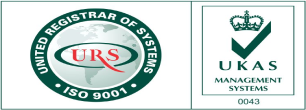Thermal management is a major consideration for a wide range of products, including industrial machinery, automobiles and consumer electronics. The objective of any thermal management solution is to maintain a product’s temperature within a range that is optimal for performance. Accomplishing this may require the removal or addition of heat, either passively or in an actively managed fashion, and this can be evaluated using thermal simulation software.
Simcenter includes comprehensive, best-in-class thermal simulation capabilities that can help you to understand the thermal characteristics of your product and subsequently tailor your thermal management solution for optimal performance.
Conduction heat transfer
Thermal conduction occurs when heat transfers through a solid, from the higher-temperature to lower-temperature regions. This happens spontaneously, and continues until a state of thermal equilibrium is attained. Typical examples of conduction in everyday life include the handle of a pot of boiling water getting hot, the increase in temperature of the outer wall of a copper pipe as hot water passes through it, or the spontaneous chill you experience when you consume a spoonful of ice cream.
Radiation heat transfer
Radiative heat transfer occurs when objects radiate microwave energy. These microwaves, which are typically located in the infra-red region of the wave spectrum, are known as thermal radiation.
Thermal modeling
Model preparation can account for up to 80 percent of the overall CAE process. This is often the result of tedious geometry clean-up and preparation.
Thermal stress
Thermal loads will usually result in stresses in components that add to the stresses resulting from other types of loads such as contact, force, and pressure. Thermal stresses are caused by changes in temperature in a structure where expansion or contraction is constrained.



